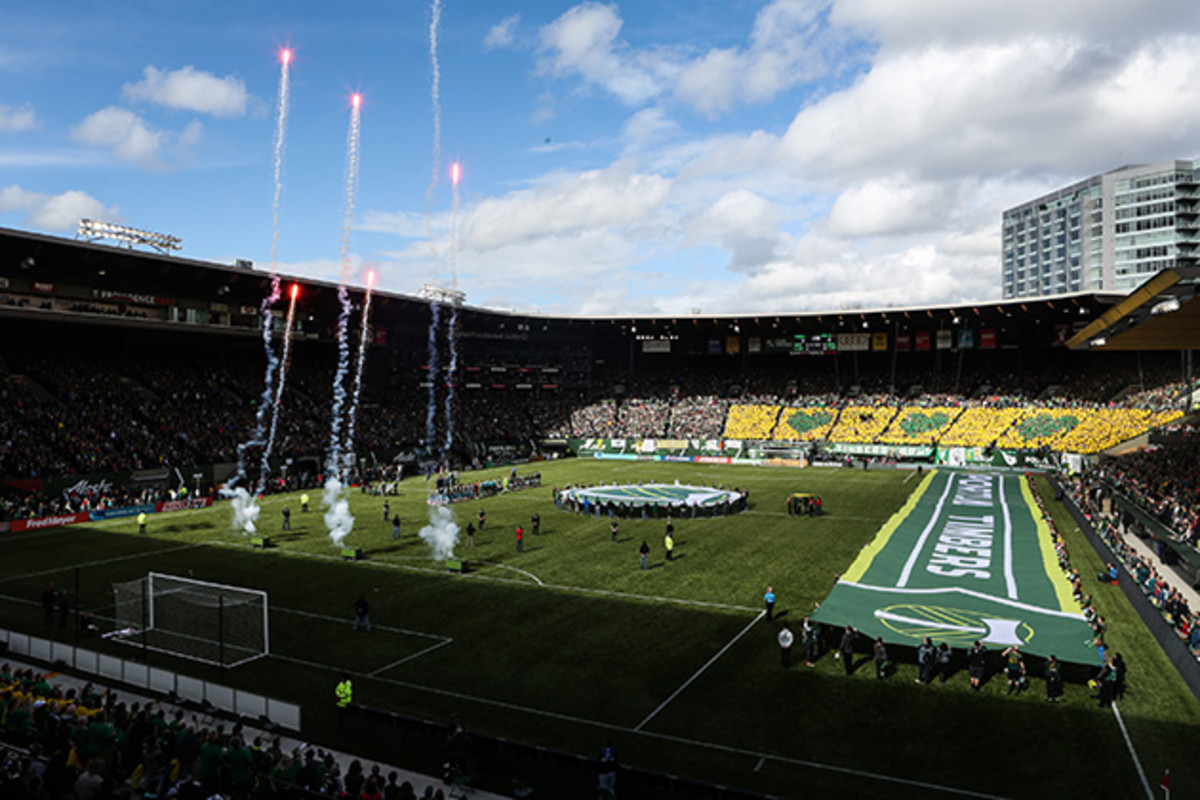Portland Timbers look for balance in conditioning and over-training in MLS

As the Timbers embarked on the defense of their MLS title last Sunday, defeating Columbus 2–1, they had a 26-man roster—and a 20-member health-and-wellness team that includes massage therapists, dentists, chiropractors, yoga instructors, nutritionists, chefs and acupuncturists.
Nik Wald, the Timbers' director of sports medicine, and Nick Milonas, director of sports science and a performance specialist at Exos, are key parts of the club's data-driven approach to keeping players on the field. The system is aimed at finding a balance between conditioning and over-training. Portland coach Caleb Porter says Milonas helps him "confirm and correct" players' weekly needs and develop more precise practices.
"Our goal from a physical standpoint is to keep everyone available first and foremost," Milonas says. "If we can give Caleb and his coaches the ability to utilize the depth of the roster, that hopefully puts us in a good position during the season."
Inside Hope Solo's innovative goalkeeper training and fitness
and his staff assess each player.
The Timbers also utilize the 12,000-square-foot Providence Park Sportscare Center, which is located on-site at the team’s home stadium. The facility provides players with various rehabilitation and recovery equipment, such as anti-gravity treadmills, resistance pools and more.
Using all of these tools, with the help of the EXOS “Spotlight” system and a data analyst on staff, Milonas is able to bring together all the pieces "to implement and prescribe a plan" for Porter.
"What a winger needs and what a central defender needs is very different, so that is why we measure players in their position," Porter says. "Over time we get an understanding of each player and how they respond in certain activities, and now, after two years of data, we have compiled a drill library."

The database houses hundreds of Porter's tactical drills, but instead of simply showing diagrams or instructions, the system provides details on how the drills affect each player. A 5v5 drill with short-sided spacing will have more acceleration, deceleration and short sprints, resulting in a high max heart rate for the players—95% of the time is "in the red," Porter says. If he wants to elicit a different physical response but work similar tactical skill, he'll refer to the library to find something else that fits.
"We can really fine tune our training: how long a session is, how long each drill is, how long the recovery time is," Porter says.
By working closely with Milonas and utilizing the team's roster of health- and fitness-focused staff members, Porter says he's able to create a balance of anaerobic and aerobic conditioning, recovery and tactical work throughout the week to prepare his players for the game.
The SI Extra Newsletter Get the best of Sports Illustrated delivered right to your inbox
Subscribe
"This allows us to really be specific and, in essence, as perfect as we can be to make sure the players are fit but also to make sure they remain healthy," Porter says. "If they remain healthy, you have the best chance to win. It all adds up."
